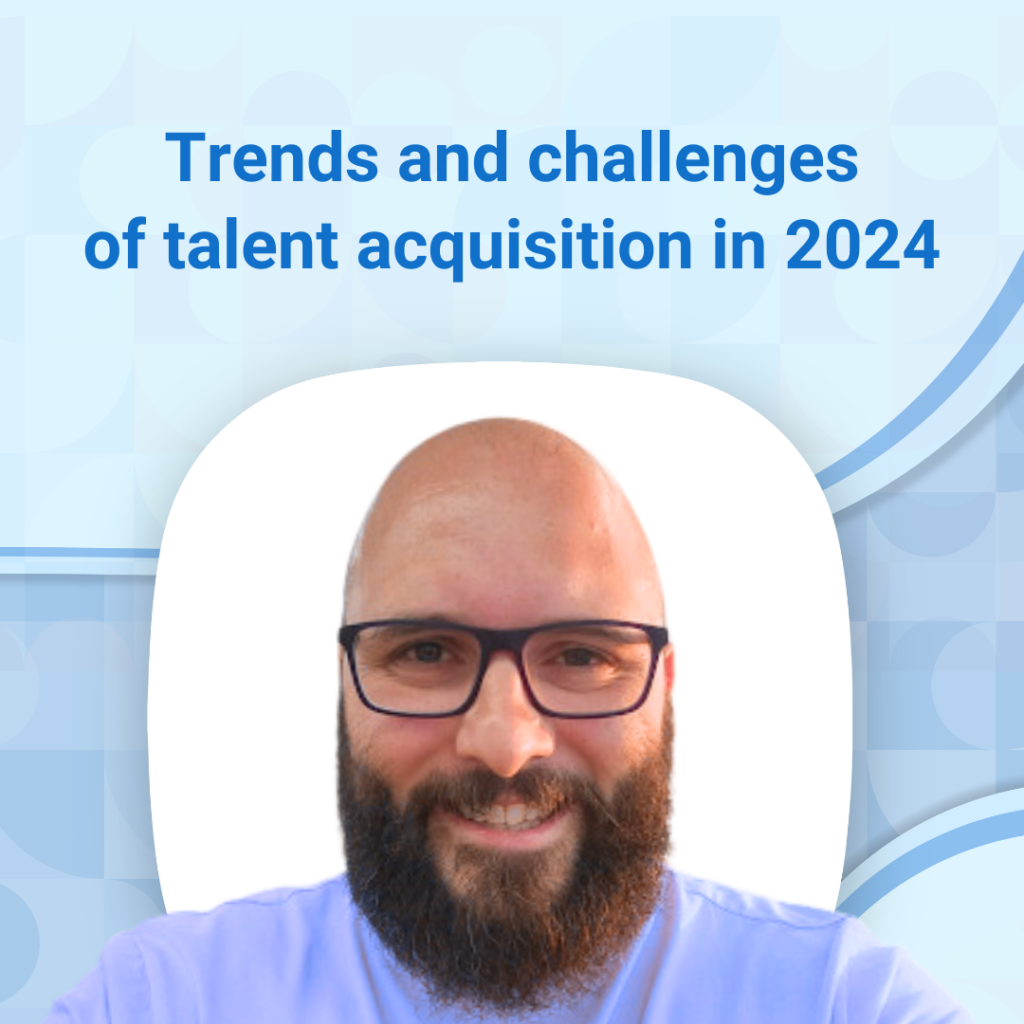In my experience, the role of talent acquisition has evolved beyond merely the management of recruiting processes.
A new wave of trends and challenges is remodeling the way we attract, hire, and retain top candidates.
For people leaders within almost every industry, staying ahead of these sudden shifts is important.
In this article, we’ll investigate the exciting changes that are happening and try to make sense of them.
1. Embracing technology-driven recruitment
The rapid advancement of tech continues to transform the talent acquisition environment.
Automation, artificial intelligence, and data analytics play pivotal roles in streamlining recruitment efforts.
I have personally found it is getting easier and quicker to complete administrative tasks without the constant need for manual input.
This means that business-critical activities receive more attention, which frees up more time for wider project improvements.
Looking at tools automatically sending rejection emails or moving a candidate from one part of the process to another within the ATS is becoming more popular with TA leaders.
Read more: What is an applicant tracking system? Your one-stop guide [Updated for 2024]
There are also some great HRIS platforms with exceptional data analytics capabilities.
But I would suggest avoiding systems that don’t offer at least the basic data, such as:
- Time-to-hire
- Time-to-fill
- Number of applications
- Retention rate
Etc. Another piece of progress that I have noticed is that companies are using more videos.
The world has been moving towards short-form content for a long time, and recruitment shouldn’t let itself get left behind.
The use of AI-powered chatbots for initial interactions and predictive analytics for candidate sourcing is becoming the norm, too.
AI-created adverts are now more prevalent in the market, which, when created properly, can really help with talent attraction.
However, whatever you choose, it must add value.
Video or AI, for the sake of it, will only hinder the candidate’s experience instead of supporting it, so keep that human touch alive.
You might also like: 10 ChatGPT prompts recruiters can use to train AI & reduce workload by half
2. Remote work and global talent pool
The events of the past few years did propel remote work into the mainstream for some time.
However, there is also a shift backward toward office-first working conditions, especially if you look at some of the big tech platforms, such as X, Zoom, and Netflix, which are publicly pushing their employees back to the face-to-face world.
Others like Microsoft, Apple and banking giant HSBC are taking a different approach and remain happy enough to promote a more balanced hybrid model, for now.
One of the big impacts that remote working has made is the blurring of geographical boundaries.
This means organizations are tapping into a global talent pool like never before, and competition for that global workforce is harsh.
Despite this, skill shortages persist in many industries.
Read more: What is remote hiring? [6 steps to success]
HR leaders are facing intense competition to secure candidates with specialized skills.
Overcoming this challenge involves offering attractive pay and benefits, development growth opportunities, and tapping into unconventional talent sources.
3. Personalization of candidate experience
Candidates now expect a personalized experience throughout their journey.
The one-size-fits-all approach is no longer effective, and people leaders need to invest in understanding candidates’ individual preferences, career aspirations, and values before they are offered a job.
This is easier said than done, though, sure.
Practically TA functions must still process hundreds or thousands of applications each year.
It would be nearly impossible for many companies to personalize each step in the process without an army of CV critics.
What can be done instead is to personalize the experience from the interview stage onwards.
For those who aren’t selected, it’s important to still give timely feedback explaining why the candidate was not chosen.
This can be automated with most ATS and goes a long way to making candidates feel that, although unsuccessful, they are still respected and a full review of their application was performed.
This means tailoring your communication and ditching the “there was another candidate” rejection line.
Candidates don’t deserve boring replies to their applications, especially when receiving potentially upsetting news.
Perhaps instead tailor the response with the ACTUAL reason.
“Your salary expectations didn’t meet our budget for this role,” or “We were unable to determine that the depth of your knowledge and experience matches our specific requirements.”
The challenge lies in striking the balance between automation and personalization to create a memorable candidate experience that sets the organization apart.
Do this, and you’ll create a brand for your business that shows you care.
Also read: 10 email templates for recruiters to keep candidates warm
In conclusion, the future of talent acquisition in 2024 is marked by exciting opportunities that demand the adaptability and innovation of people leaders in HR and recruitment.
HR leaders can position themselves for success by endorsing technology, personalizing the candidate experience, and boldly addressing every challenge.






